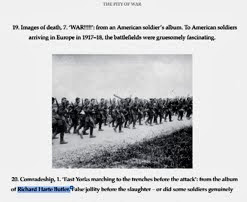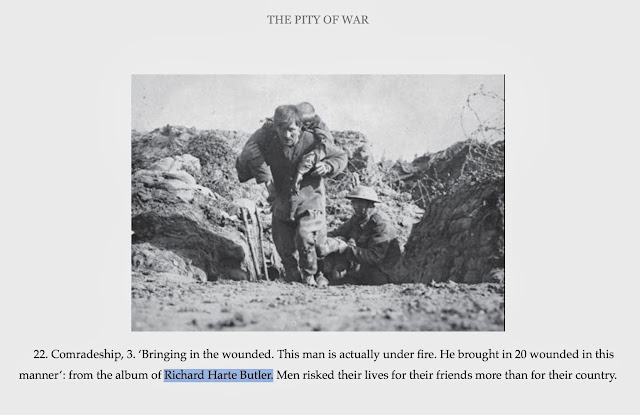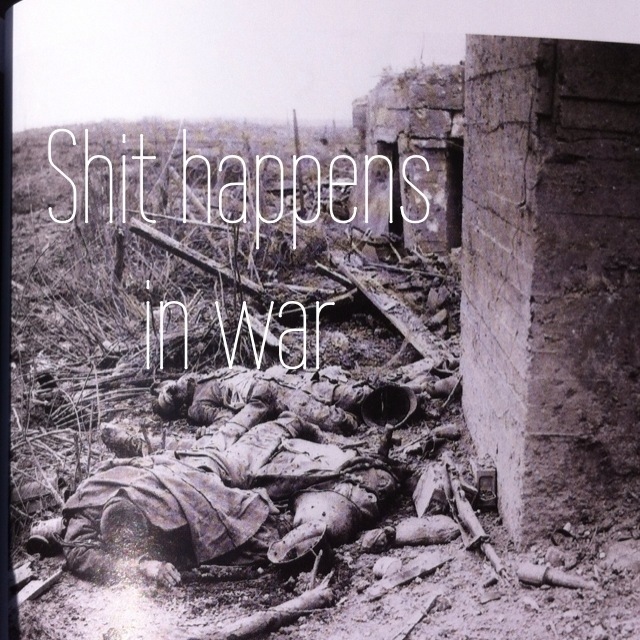Home » 1913
Category Archives: 1913
Sir Douglas Haig by J P Harris (2008)
Created in SimpleMinds. get in touch if you’d like a copy. Download the SimpleMinds App for free.
Douglas Haig and the First World War (2008) J P Harriss
Nearly 600 pages that follow a chronology that is familiar. Insights on Haig are limited – perhaps reading Haig’s diary and a biography at the same time would help. This is written by a military historian with judgement of Haig’s command key. We get little insight into the man – if there is much a a personal life to probe. His diary appears to reveal little. What does come over is how often Haig was to blame for actions that were unlikely to succeed in doing much other than expending a good deal of munitions and men – time and time again he planned an offensive that would lead to a break-through, require cavalry support and put tens of thousands of men against barbed wire, machine guns and shrapnel. His greatest skill was to climb and keep climbing the ladder of promotion and to tread carefully around events which might have led to his being passed over for promotion … or his resignation asked for, or accepted.
My first read. A second read possibly to follow unless I can be pointed to a biography.
Notes as iPhone/iPad pictures with annotations (Studio) and a mindmap (SimpleMinds)
Britain had been preparing for war with Germany as is clear from manoeuvres, in this instance with both France and Russia, in 1912 (Harris, 2008:51). Perhaps the re-organisation of the Army to have the Expeditionary Force, however small, was part of an anxiety and vulnerability – had Britain not also contemplated conscription?
As the nature of artillery changed – longer range, great accuracy and a diversity of shells types from high explosives to shrapnel it is staggering that proper thought wasn’t given to how destroyed the land was over which the armies would have to travel.
Typo alert! Actually there are a couple more but I so no value
Where tactics have failed to deliver why did Haig persist? How could more of the same possibly get better results next time? What part of his mindset made him stick to this? Does he lack imagination? He appears emotionally dry or aloof – his relationship with his wife and family hardly suggests a person with a close emotional attachment.
Haig’s greatest skill and purpose was to climb to the top of the Army ladder – what he did or could do when he rose to the top was another matter. This isn’t what makes a great leader – he is like a career civil servant. But what would a hot headed, womanizing, gambler of a man done with this power? If Haig made mistakes they need to be considered and compared with other leaders on the Western and Eastern Fronts. Had Britain a leader like Foch, Neville, Falkenhayn or Holweg … or the Russian aristocrats would we have fared better or differently? And if we’d had Robertson rather than Haig?
History written by a military historian is different to history or biography – the audience here is expected to learn and potentially apply at staff level the lessons from past battles. Haig’s diary is revealing because in this supposedly private moments he is reveals so little: statements of the weather, not what this could mean, statement of events without reflection on what he did well or badly. Self-control in both his public and private life.
To understand Haig then we need to know who the alternatives might have been and whether in reality they could or would have behaved differently: Robertson, Du Can and Rawlinson are different men.
My impression is of a deluded fantasist with no one able or willing to stand up to him … not even Lloyd George. Haig, with Royal patronage and few competing for his role, could and would do as he pleased. He resented having to play second fiddle to the French. In the early stages of the war he ignored orders or requests with potentially dire consequences yet he got away with it.
Haig’s tactics: more munitions, human dynamism and officers of the ‘thruster’ type – people who would risk all regardless. Is there anything we can learn from Haig’s achievements as a polo player from this? What does it require to win at polo?
Haig pressed on with tactics that would leave many thousands dead for little gain and he wasn’t able or willing to question what he could or should do differently.
How clear did failure have to be to get Haig to change his tactics?
Failure of this kind should surely have seen Haig replaced? To what extend did his ‘moral fibre’, his otherwise untarnished character, make it less easy to remove him?
Overexcited, overoptomistic, blind to failure, forever looking beyond the horizon, convinced cavalry had a role, yet able to try gas and tanks … anxious for his peers and superiors to shower him in praise and his subordinates to be fawning …
Self-righteous and self-assured – did his religious beliefs permit his unstinting view of the world? He had the image of someone who deserved authority and respected it. He was fit, sober and in a stable marriage. He worked hard and played the game well. Born into a different age could he have survived? He lacks the flair of Montgomery or Churchill. Described as taciturn, to what degree might or could his asthma have been a controlling influence?
He looked the part and was fastidious about his health – what else could as asthmatic do in the early 20th century? Did he know what the triggers were, or had he learnt from experience to avoid certain foods and situations – not least smoking? Was he prone to chest infections?
Whilst those around him realised all talk of a ‘break-through’ was unrealistic, this is what Haig constantly planned for and expected. Or was it simply wishful thinking?
Step by step is what occurred … as a result from efforts to breakthrough? A case of shoot for the stars and hitting the moon? That in Haig’s eyes step by step would have equated to inconsequential nibbling?
Obsessive, selective, fixated, God-guided, controlling, cavalry-orientated, driven obdurate, blind … consistent, controlled, tempered, magisterial … aloof and with tunnel-vision.
Able to comprehend, but unable to bend? Unable to think of any alternative. The world around him changed, but Haig stayed resolutely in the 19th century.
Chance the way the leaders played off against each other? Men like so many bullets or sandbags, simply a resource to count then stack in the knowledge that there would be great losses but that these could be shored up?
He didn’t like to have his feather’s ruffled. He wanted the game played in his way with him in charge.
A hypocrite who would fail to come to the aid of others … yet others to come to the aid of him. Too good or important to warrant risking his men, or putting his men under another’s control and willing only at the last minute to seek help when things looked desperate and he had no choice.
Related articles
- Haig was no hero (machineguncorps.com)
- Museums watch: The poppy and Reading (getreading.co.uk)
- ‘Your Country Needs You’ (thesocialistway.blogspot.com)
- Alex Massie: War that changed a nation (scotsman.com)
- The First World War Pt.5 (detectingblackpool.wordpress.com)
- Canada and the First World War (anoctoberhorse.wordpress.
World War 1 was a direct consequence of the demise of the Ottoman Empire
Like an undergraduate, rather than a postgraduate, long in tooth, I am reading Prof.C. Clark’s book ‘The Sleepwalkers: How Europe went to war in1914’ for the second time. Read as an eBook, largelly on an iPad with some reading when outdoors on a Kindle, or at my desk, I highlighight in multiple colours and add some short notes as I go along.
With this second reading I am taking notes – in ink using a brand new fountain pen into a softback ‘journal’ or note book. To assemble the information and have it stick I am now professionally aware as an educator with a Master’s degree in e-learning that you need to put in some effort, rather than being passive; that working with different media helps, and that sifting and repeating and reworking content (as I came to appreciate during my A’ levels several decades ago) contributes to this process – as will writing an assignment, working it into fiction (as I plan to do) and even visualizing the content in mindmaps and drawings/paintings.
I have this idea of expressing what I find out as if I could brief my late grandfather; he’d be 117.
For Jack Wilson of Benfieldside, County Durham the First War was a job – he spoke of ‘getting on with it’. As he left school age 14 and was never party to any kind of broader insight, my talking of the Ottoman Empire, the role of Italy, Russia, Serbia and France will intrigue him.
So, we can’t blame the Germans? We have to blame the times? And the Press … and even bankers, at least those in France who financed massive infrastructure and armement projects in Russia and Serbia … and a collection of foreign ministers and other people hungry for power, or for the strength and prestige if their respective nations or empires.
I cannot recommend Prof. Clark’s book more strongly – it should be everyone’s starting point as we approach the hundreth anniversary of this dreadful conflict and reflect on what it did to people and the world.
‘The war to end war’ to quote HGWells correctly cast a long shadow across the world Europe and the Balkans, the former Ottoman Empire and beyond.
The Sleepwalkers: why Europe went to war in 1914
A more thorough, comprehensive, balanced and relevant, detailed narrative of whst took place, how and why that led to conflict in 1914. Vital resding to anyone interested on why the world went to war in 1914, and background to many 20th and even 21sf century conflicts since from the Second World War, through the Cold War, Balkan War and even civil war in Syria. As the Ottoman Empire fell apart like a pair of unmendable trousers the Balkans became a collection of nations that the powers of the day wanted to influence – Russia eventually picking Serbia which was also the nemesis of Austria-Hungary. Britain was aligned with Russia to protect interests far further afield, such ad India, while France, still wounded from the loss of Alsace-Lorraine was more thsn prepared to fight Germany if first the alliance with Russia, and then that with Britain could be brought into play. Some three decades of taking an interest in the First War and this book is by far the best read on the causes and therefore the most important of anything I have read. Make it the first book of any you may wish to read as the centenary looms.
Who caused the First World War? Which men, not nations, are to blame?
The Sleepwalkers: How Europe went to war in 1914 by the Australian historian Christopher Clark is the most thorough, balanced and I therefore believe accurate assessment of what took Europe and the world to war in 1914 – repurcussions froms which we still feel to this day, not least in the current impasses in Syria, a product of the collapse of the Ottoman Empire and in its use of chemical weapons first used and condemned in the First World War. Blaming a nationa is foolish – the blame, if we are to pick people, begins with the Serbian plotter, assin and gangster Dragutin Dimitrijevic – a regicide who planned and successfully executed the assasination of archduke Franz Ferdinand – without him none of this would have happened. In HIS hands is the blood of 9 million from the First War and 20 million from the Second. He wanted to bring things to an impasse between Serbia and Austria-Hungary so that a Great Serbia could be forged. Next in line to blame is Tzar Nicholas II of Russia who turned any advice on what had caused or who had instigated the assasination of the Archduke on its head and in pushing to support Serbia knew an attack on Austria- Hungary was needed and doing this would expose a flank to German so would naturally have to include an attack on Germany too. Next I blame the French for siding with Russia and knowing that they would need to attack German or defend an attack from Germany. Tucked in here somewhere blame must go to Conrad and Franz Josef of the Austro-Hungarian Empire – who deserved and required retribution for what all knew to have been a plot from Serbia if not from the Serbian government – the problem here was the tangled mess that was the Serbian government – too weak to oppose terrorist groupings (there are two) such as The Black Hand, who like a secretive group of Free Masons or the ‘old school tie’ and artistocratic links that controlled politics in the British Empire, could not be policed, managed or held to account. Austria-Hungary should have asked, “what would Franz Ferdinand” have done? He would had trodden carefully, always having wanted to give greater autonomy to ‘nations’ within the empire. And, on the list, but lower down, blame needs to go to Gavrilo Princip. As various opportunities presented themselves to assasinated the archduke and some of the seven assasins had their go, two go cold feet on seeing the duchess Sophia – did she need to die too? Had Princip shot only the archduke then the response from Vienna, though tough, may have been less than all out war with Serbia. I do not blame Germany at all, indeed I see how they suddenly found themselves hemmed in by aggressors. Germany, like Russia, were then simply chancing their arm, believing each had the adequate military muscle to prevails and itching to settle all kinds of unresolved scores and national and empirical ambitions that a battle or two would resolve. None could see the scale. It became, and has been, a hundred year’s of war …
1913: The year before the storm
I’m both listening to and reading ‘1913: The year before the storm’ – a fascinating account of the era with passing vignettes of people who would make, or destroy the rest of the century from Hitler to Stalin, Kafka to Tito, Cezanne to Picasso and Franz Ferdinand and Trotsky.
The year Ecstacy received its patent and the fully intact Ozone Layer was identified. Then all hell let’s loose in 1914 to sweep away the old.
The line that took me to the book converned Proust – describing how he created a cage for himself so thhat ge could write, with the light shut out and three layers of curtains to muffle the noise.
Related articles
- 1913: The Year Before the Storm by Florian Illies – review (guardian.co.uk)
- 1913: The Year Before the Storm by Florian Illies – review (oddonion.com)






